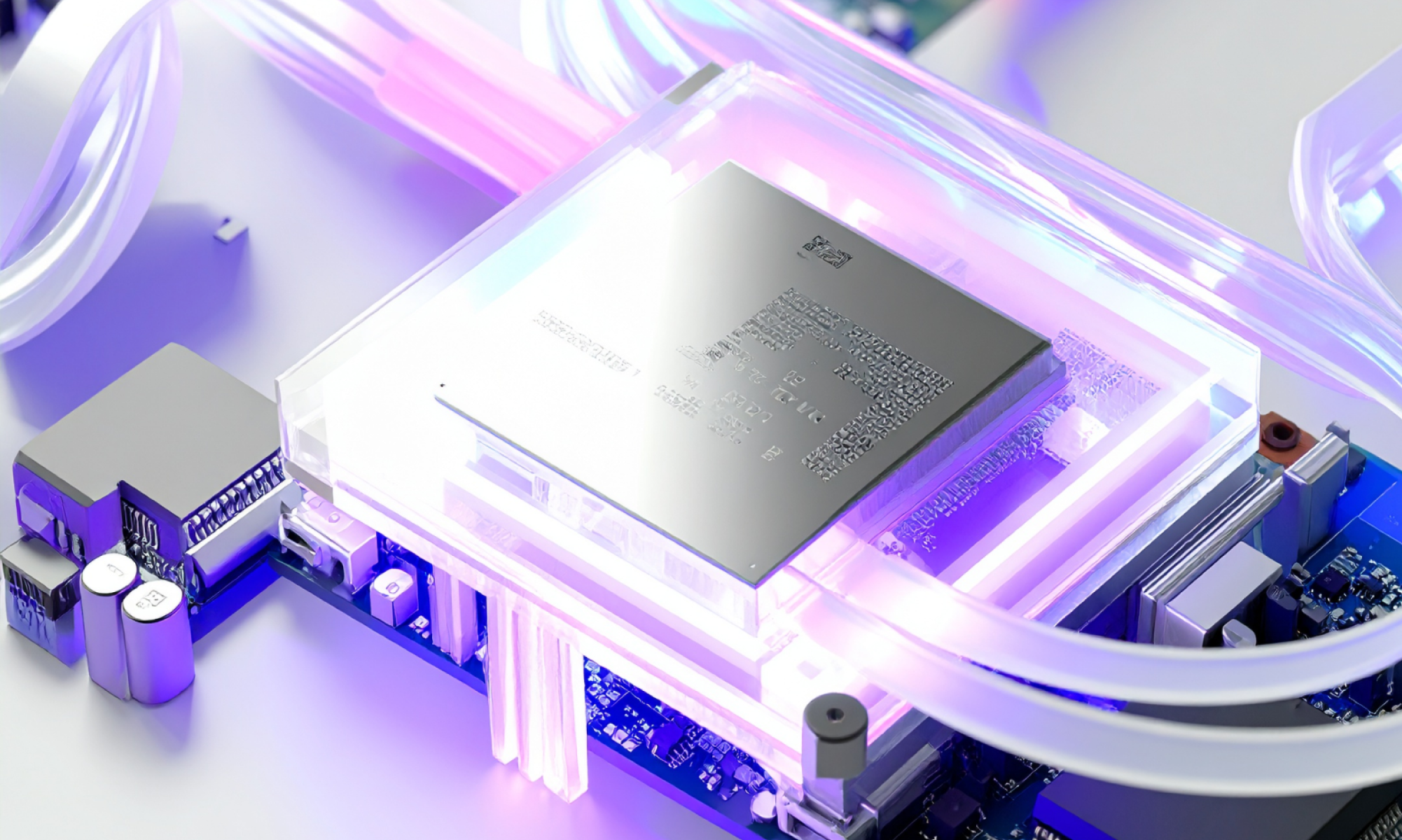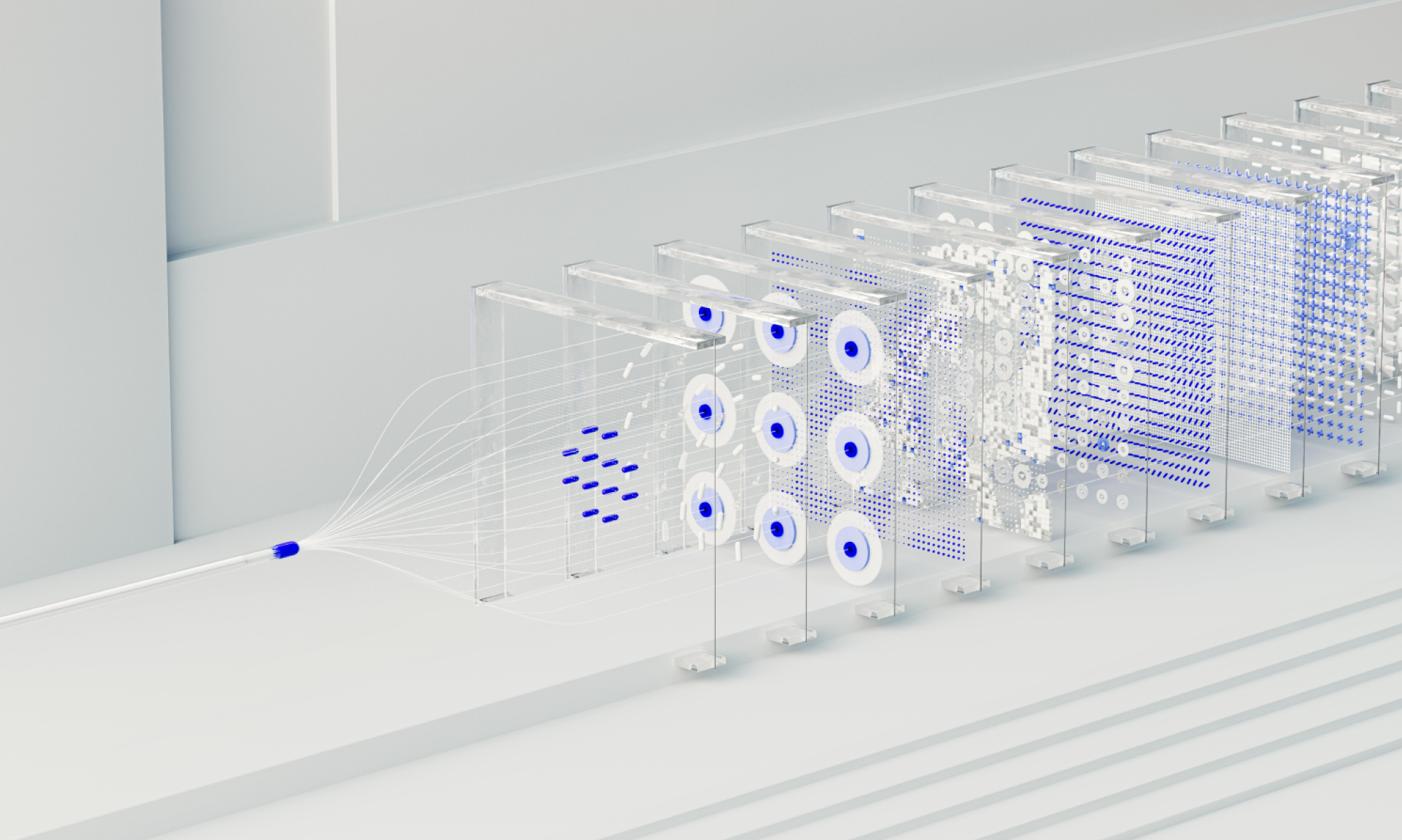AI
our blog
Master the Phases of Product Development for CTO Success

Overview
This article underscores the pivotal phases of product development that are vital for a Chief Technology Officer's (CTO) success in aligning technology initiatives with overarching business objectives. It delineates a structured approach encompassing:
- Market research
- Concept creation
- Prototyping
- Testing
- Commercialization
- Post-launch evaluation
Mastering these phases is not merely beneficial; it is essential for delivering innovative solutions that effectively meet customer needs and foster business growth. By focusing on these critical stages, CTOs can drive their organizations forward with confidence and precision.
Introduction
Mastering the phases of product development is crucial for any Chief Technology Officer (CTO) aiming to drive innovation and align technology with business goals. This comprehensive guide delves into the essential steps from ideation to launch, highlighting the significant impact that effective product development can have on meeting customer needs and maintaining a competitive edge. However, with numerous moving parts and potential pitfalls, how can CTOs ensure that their product development processes are not only efficient but also successful in delivering market-ready solutions?
Define Product Development and Its Importance
The entire process of bringing a novel offering to market includes the phases of product development, from ideation through design, creation, and launch. This multifaceted journey encompasses the critical phases of product development, including:
- Market research
- Concept creation
- Prototyping
- Testing
- Commercialization
The significance of item innovation lies in its ability to generate solutions that meet customer needs, drive business growth, and maintain a competitive advantage. For CTOs, mastering item creation is essential; it aligns technology initiatives with business objectives, ensuring that offerings not only perform effectively but also resonate with users and stakeholders alike.
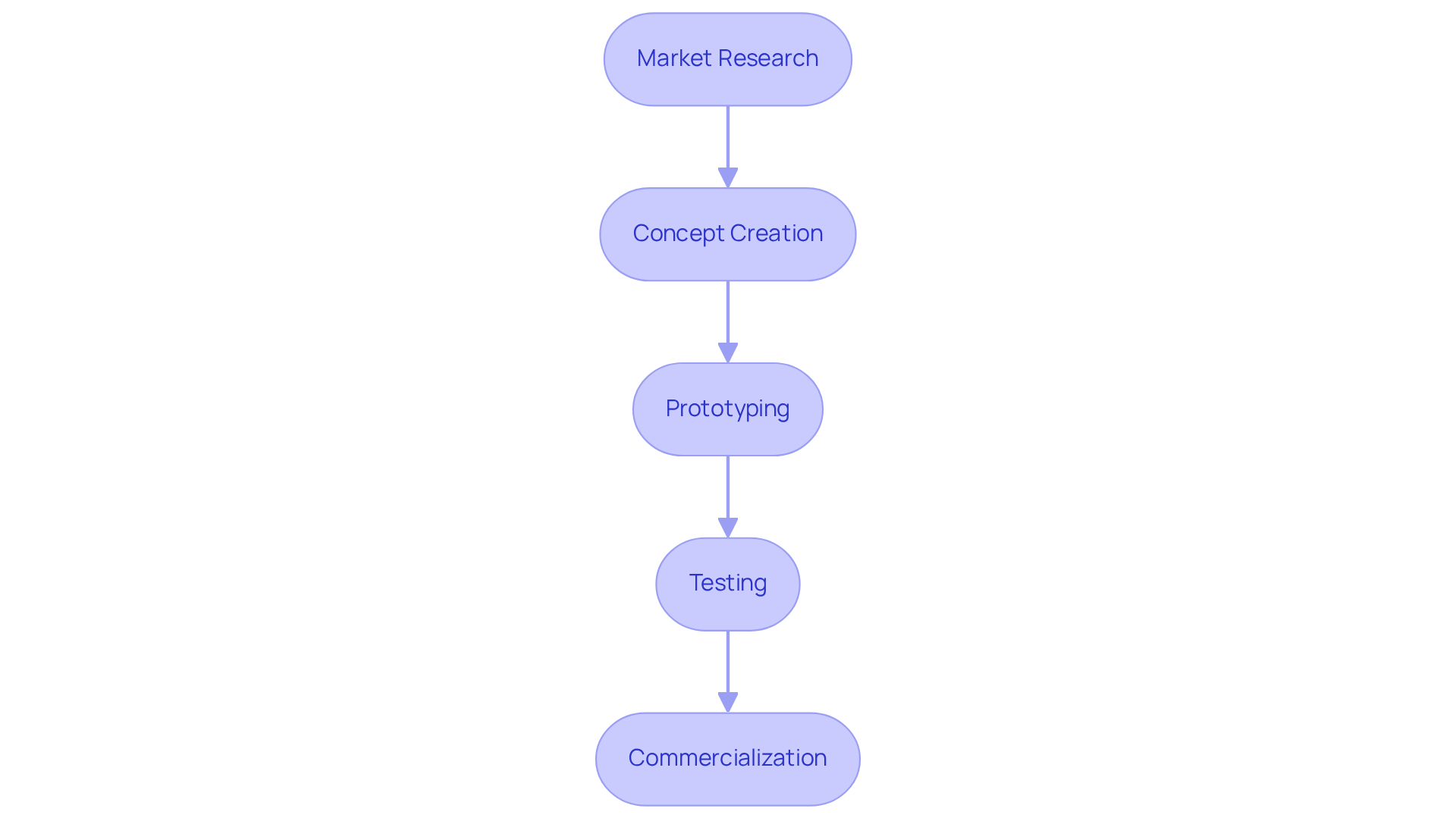
Outline the Key Phases of Product Development
The product development process typically encompasses several key phases of product development that are essential for successful outcomes.
-
Ideation: This initial phase involves generating innovative ideas grounded in market needs and technological possibilities. By tapping into current trends and consumer feedback, teams can identify opportunities for new products during the phases of product development.
-
Concept Development: Following ideation, the focus shifts to refining these ideas into feasible concepts through thorough research and analysis. This stage is crucial for assessing the viability of proposed solutions and ensuring alignment with market demands within the phases of product development.
-
Prototyping: In this phase, a preliminary version of the product is created to test both functionality and design. Prototyping allows teams to visualize concepts and identify potential issues early in the phases of product development.
-
Testing: The prototype is then assessed with actual participants, gathering valuable input to implement necessary modifications. This iterative process is vital for enhancing product quality and user satisfaction throughout the phases of product development.
-
Launch: Once testing is complete, the product is introduced to the market, accompanied by strategic marketing initiatives designed to drive adoption. A well-executed launch can significantly impact the phases of product development, especially initial sales and market reception.
-
Post-Launch Evaluation: Finally, monitoring performance and user feedback is essential for informing future iterations or enhancements. This ongoing evaluation during the phases of product development ensures that the product remains relevant and continues to meet user needs effectively.
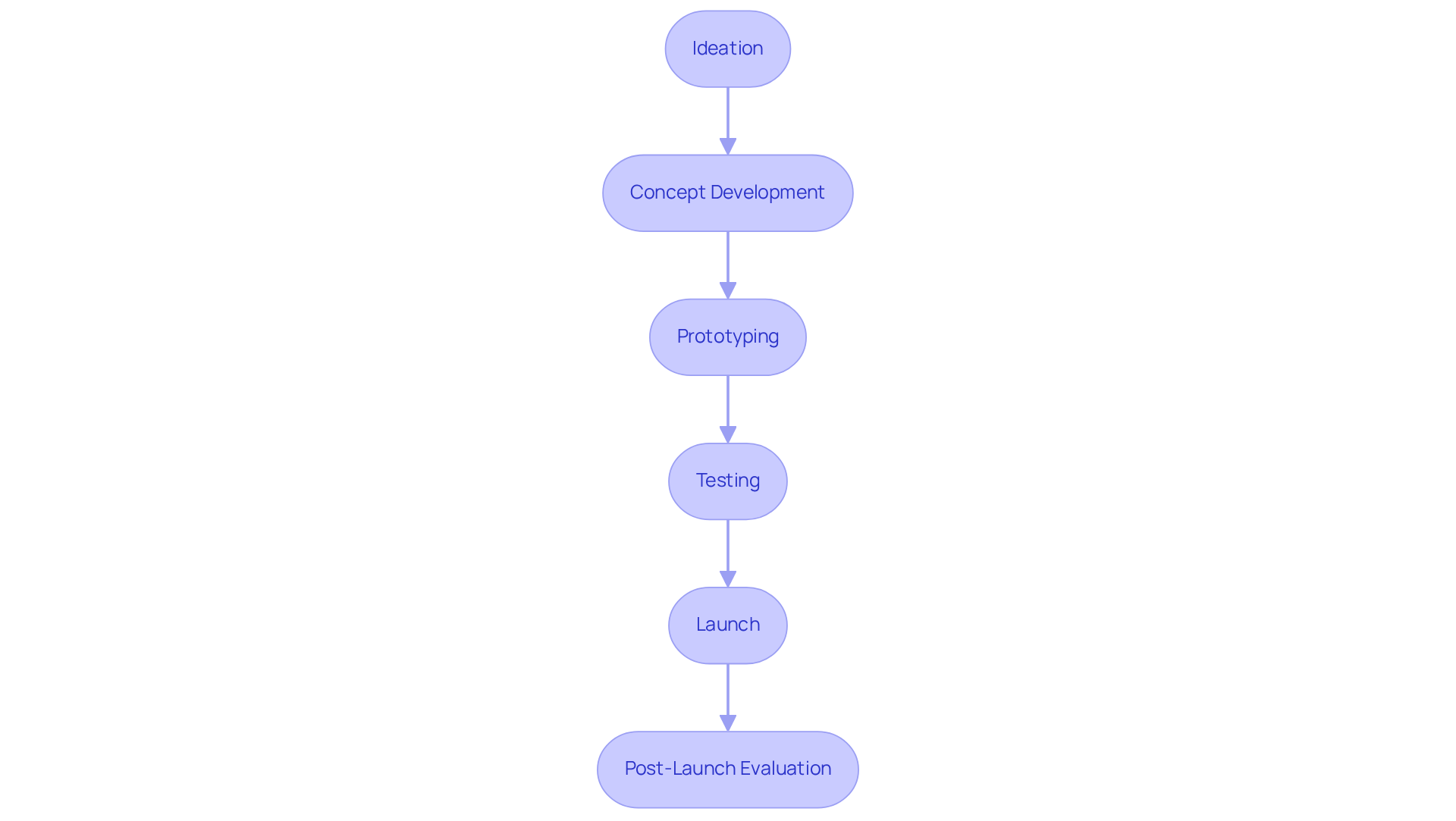
Implement Strategies for Each Phase: Step-by-Step Actions
To effectively navigate each phase of product development, implement the following strategies:
-
Ideation: Facilitate brainstorming sessions with cross-functional teams, as nearly 48% of physical product development teams are structured this way, fostering diverse perspectives. Utilize client insights and market analysis to identify challenges, ensuring that the item meets genuine consumer requirements.
-
Concept Development: Develop comprehensive product specifications and user personas to guide the design process. Validate concepts through surveys or focus groups, which can reveal critical insights and enhance alignment with market demands.
-
Prototyping: Utilize rapid prototyping tools to create low-fidelity models, allowing for quick iterations based on user feedback. Digital twin technologies can also shorten total creation times by 20%-50% and lessen the number of prototypes required, streamlining the prototyping process. Involve stakeholders in the evaluation process to collect initial feedback, which is essential for enhancing the item before additional progress.
-
Testing: Conduct usability testing with target users to uncover potential issues and areas for improvement. Significantly, 41% of industrial firms employ data analytics and AI in the phases of product development, which can greatly enhance the testing phase. Analyze data from testing sessions to inform design improvements, ensuring that the final outcome meets user expectations.
-
Launch: Formulate a comprehensive marketing plan that encompasses digital campaigns and public relations to maximize product visibility. For instance, the partnership with Canopy led to a well-received offering that enhanced operational efficiency and customer engagement. Prepare customer support teams to handle inquiries and responses efficiently, enabling a seamless transition after launch.
-
Post-Launch Evaluation: Continuously monitor key performance indicators (KPIs) to evaluate product success, focusing on metrics that align with business objectives. Consistently collect input from clients to guide upcoming revisions and improvements, as continual interaction is essential for lasting relevance and customer satisfaction. As highlighted by the Tenet Editorial Team, these item creation statistics demonstrate how strategy, consumer input, and intelligent tools result in improved outcomes.
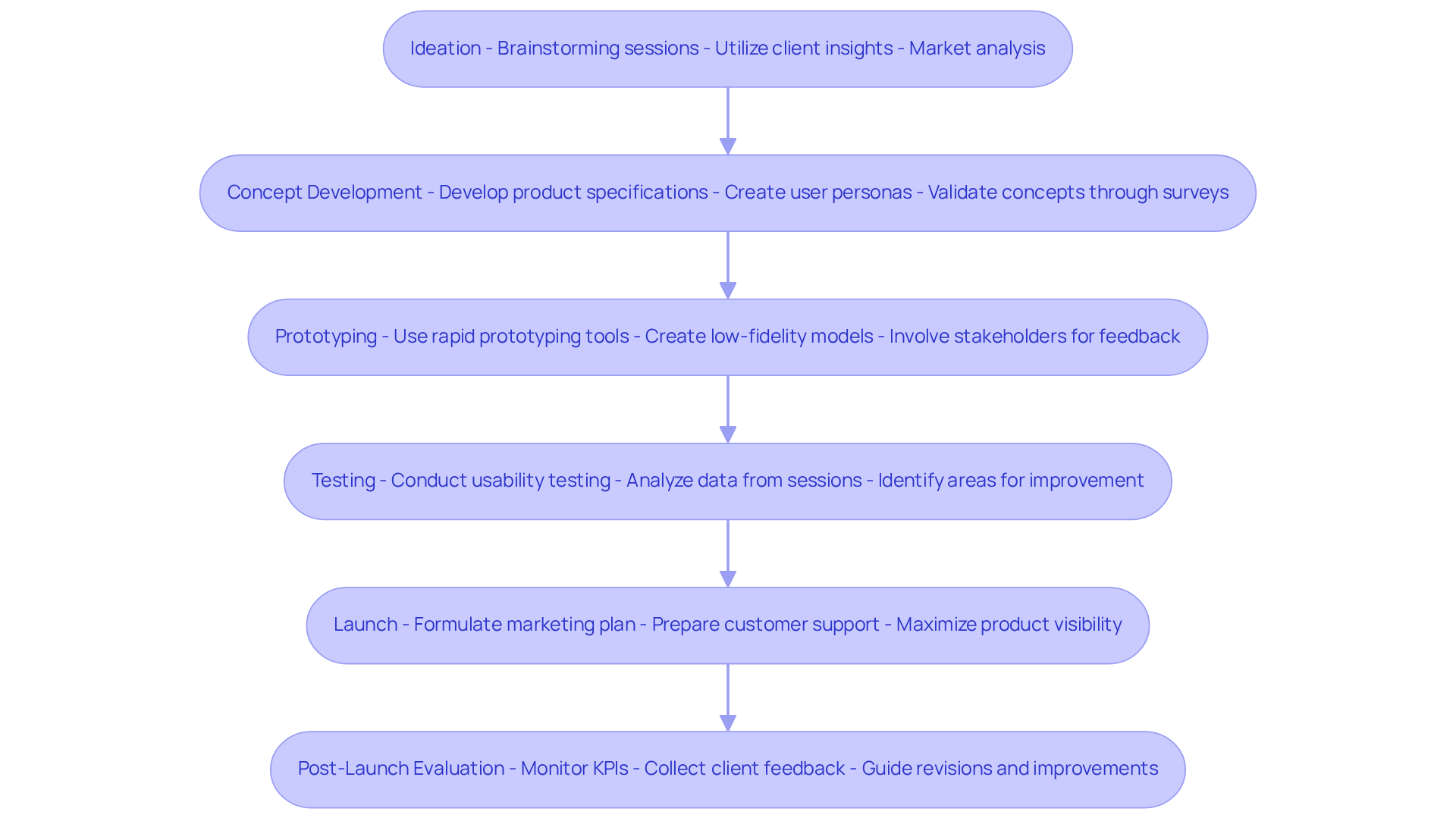
Utilize Tools and Resources for Effective Product Development
To optimize product development effectiveness, consider leveraging the following tools and resources:
-
Project Management Software: Utilize platforms like Jira or Asana to efficiently manage tasks, track progress, and enhance team collaboration. As Michael Porter states, "The essence of strategy is choosing what not to do," underscoring the importance of effective project management in prioritizing tasks.
-
Prototyping Tools: Employ tools like Figma or Sketch for swift design and testing of prototypes, allowing prompt iterations based on user feedback. Studio Graphene's agile, human-centered approach exemplifies how these tools facilitate effective prototyping.
-
Participant Feedback Tools: Implement solutions like UserTesting or SurveyMonkey to gather valuable insights from users during the phases of product development, ensuring the product meets their needs. This aligns with the agency's commitment to understanding client needs through thorough discovery processes.
-
Analytics Tools: Leverage Google Analytics or Mixpanel to monitor user engagement and evaluate performance post-launch, facilitating data-driven decisions. Successful outcomes from projects like Peckwater Brands highlight the critical role of analytics in refining product offerings.
-
Documentation Tools: Documentation tools are crucial for maintaining comprehensive documentation throughout the phases of product development with tools like Confluence or Notion, ensuring clarity and continuity. This practice supports the collaborative environment that Studio Graphene fosters across its studios in London, Delhi, Lisbon, and Geneva.
-
Collaboration Tools: Enhance communication among team members, particularly in remote settings, with platforms like Slack or Microsoft Teams, fostering a collaborative environment. With a team of over 130 professionals, effective collaboration is essential for driving innovation and operational efficiency.
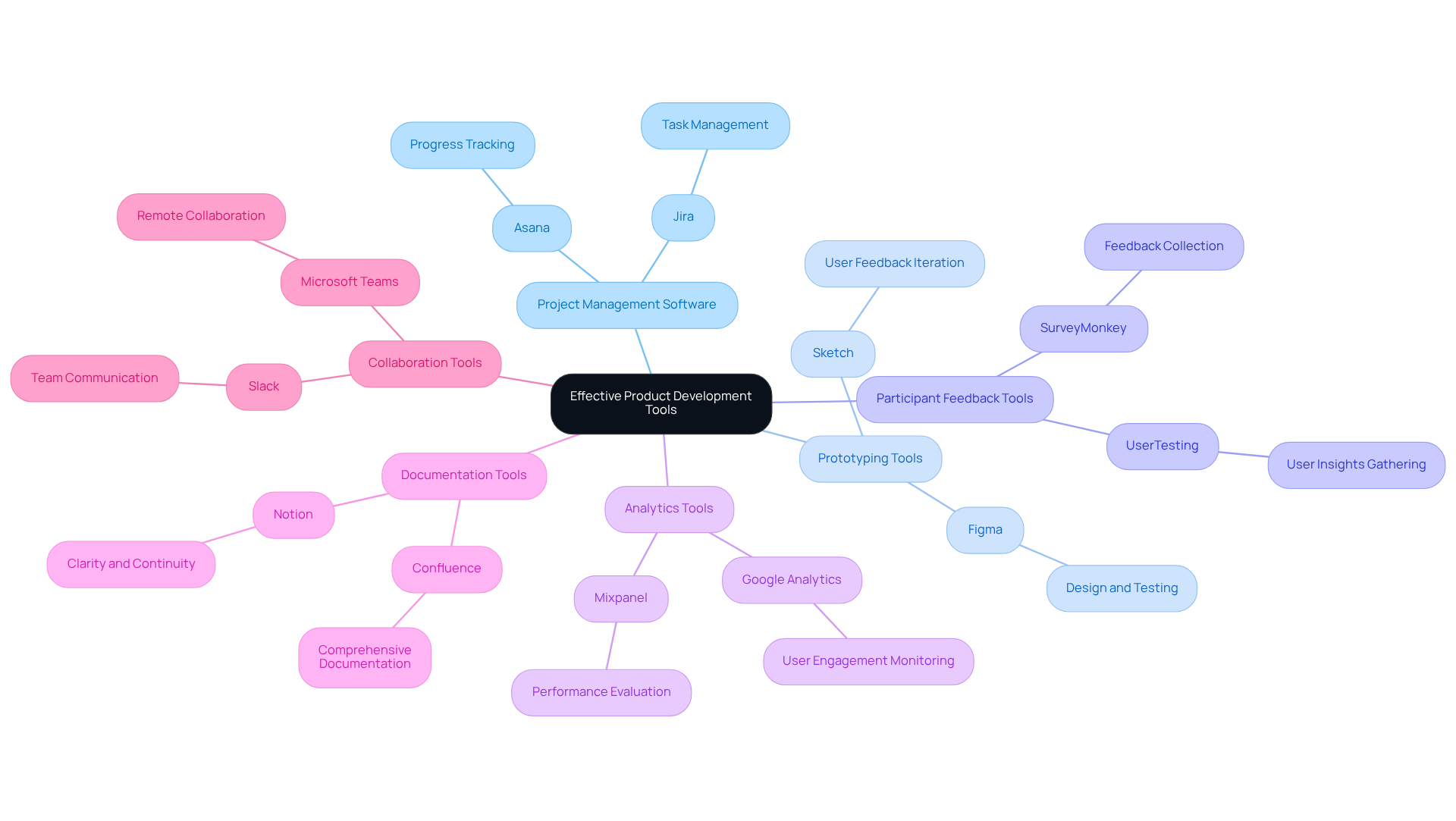
Conclusion
Mastering the phases of product development is essential for CTOs who seek to align technological initiatives with overarching business goals. By thoroughly understanding the intricate journey from ideation to commercialization, CTOs can ensure their products not only meet market demands but also deliver exceptional value to users. This mastery transcends mere technical requirements; it is a strategic necessity that can significantly shape a company's competitive edge and long-term success.
Throughout this article, we have outlined key phases of product development, underscoring the importance of each stage. From ideation and concept development to prototyping, testing, and post-launch evaluation, every phase plays a critical role in refining ideas and enhancing product quality. Implementing effective strategies, leveraging appropriate tools, and continuously gathering user feedback are indispensable for successfully navigating this complex process.
In conclusion, the journey of product development is a dynamic interplay of creativity, strategy, and technology. CTOs are urged to approach these phases with diligence and foresight, ensuring their products not only launch successfully but also evolve in response to user needs and market trends. By committing to a structured approach, organizations can foster innovation, drive growth, and ultimately achieve lasting success in an increasingly competitive landscape.



